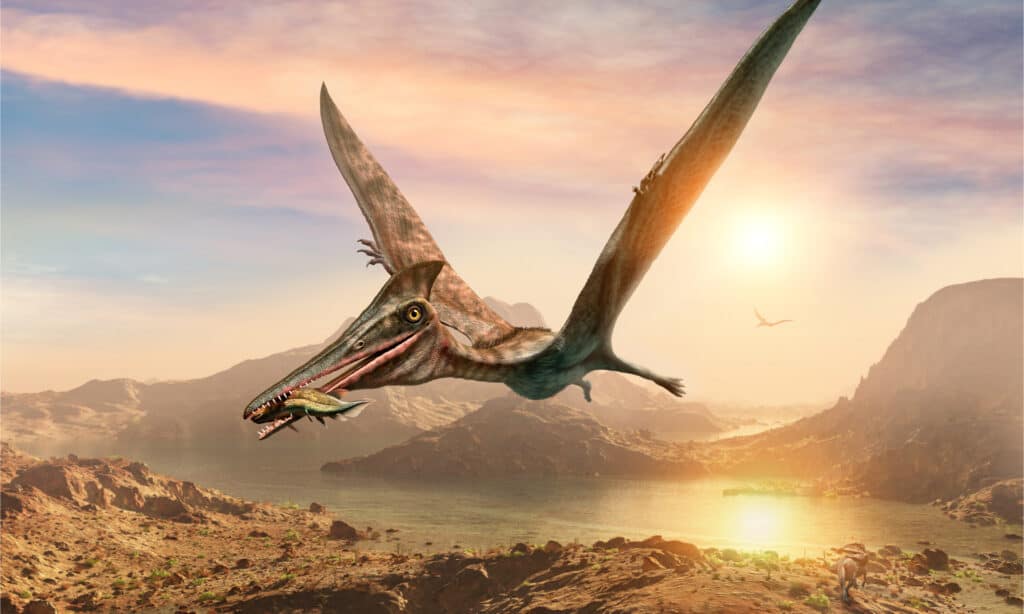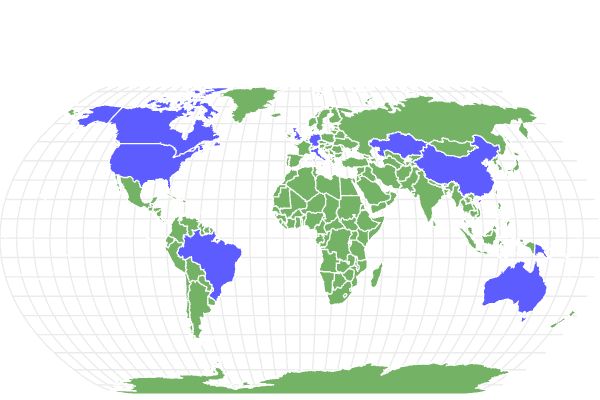Pterodactyl
.jumbotron {
background-image: url(“https://a-z-animals.com/media/2022/06/Pterodactyl-flying-400×300.jpg”);
}
}
@media only screen and (min-width: 641px) and (max-width: 920px) {
.jumbotron {
background-image: url(“https://a-z-animals.com/media/2022/06/Pterodactyl-flying-470×370.jpg”);
}
}
@media only screen and (min-width: 921px) {
.jumbotron {
background-image: url(“https://a-z-animals.com/media/2022/06/Pterodactyl-flying.jpg”);
}
}
Pterodactyl
Pterodactylus
Pterodactyl is not technically a dinosaur. Although they lived during the same time as dinosaurs, they are classified as winged reptiles.
Pterodactyl Scientific Classification
- Kingdom
- Animalia
- Phylum
- Chordata
- Class
- Reptilia
- Order
- Pterodactylus
- Family
- Azhdarchidae
- Genus
- Pterodactylus
- Scientific Name
- Pterodactylus
Read our Complete Guide to Classification of Animals.
Pterodactyl Conservation Status
Pterodactyl Facts
- Prey
- Fish, Small Dinosaurs
- Name Of Young
- Flaplings
- Group Behavior
-
- Colonial Nesting
- Group
- Fun Fact
- Pterodactyl is not technically a dinosaur. Although they lived during the same time as dinosaurs, they are classified as winged reptiles.
- Biggest Threat
- Various carnivores, such as lions, sharks, and other amphibious reptiles
- Most Distinctive Feature
- A crested head
- Distinctive Feature
- They had fur, not feathers
- Wingspan
- 3.4 ft
- Litter Size
- 2
- Habitat
- Mountains, Caves, Trees
- Diet
- Carnivore
- Lifestyle
-
- Group
- Favorite Food
- Small dinosaurs and similar animals and fish
- Type
- Reptile
- Number Of Species
- 110
- Nesting Location
- On the top of mountains near the sea
Pterodactyl Physical Characteristics
- Color
-
- Brown
- Ginger
- Skin Type
- Fur
- Lifespan
- 25 years
- Weight
- 2-10 lbs
- Height
- 3.5 ft
- Length
- 3.4 ft
- Age of Sexual Maturity
- 2 years
- Venomous
- No
- Aggression
- Low
This post may contain affiliate links to our partners like Chewy, Amazon, and others. Purchasing through these helps us further the A-Z Animals mission to educate about the world’s species..

Spiders that fly! Fish that walk! And 1000+ more incredible animals. Discover them all for FREE
.photo-gallery {
–margin: 0px auto 0px;
–padding: 0px 0px 0px 0px;
}
.gallery-link {
background-image: url(“https://a-z-animals.com/media/2022/06/Pterodactyls-flying-over-water-1024×614.jpg”);
background-repeat: no-repeat;
background-size: cover;
background-position: center;
height: 500px;
justify-content: center;
text-align: center;
align-items: center;
display: flex;
border: 2px solid #000;
}
.gallery-link img {
height: 50%;
}
@media only screen and (max-width: 768px) {
.gallery-link {
height: 300px !important;
}
}
View all of the Pterodactyl images!
Pterodactylus is a genus that comes from the extinct group of Pterosaurs and is now commonly referred to as the Latin word Pterodactyl.
Description and Size
Pterodactyls are one of the most interesting species to study. Here are a few facts that we gathered related to its physical attributes.
- Pterodactyl is Latin for “wing finger.” They had an exceptionally long fourth digit that connected their large wings made up of a soft skin membrane. Just picture bat-like wings, only huge.
- The size of these animals varied with each species. They had an approximately 3-meter-long head, a 3-meter-long neck, limbs as long as 2.5 meters, and a torso the size of an adult man (approximately 2 meters).
- A crest-shaped head was common in almost all the species but one thing that stood out was that each species had a different combination and ration of flesh and bone. Some had bony crests, others with only skin crests, and most with different other combinations.
- They had a huge but compact furred body with no feathers. However, their bones were just as hollow as you would find in today’s birds.
- The jaws were beautiful with short, spiky teeth able to sink into their prey like carnivores and had a somewhat narrow and long jaw. Almost like a snout that was used to hunt prey, like a pelican. They had around 90 teeth.
- Their tails were either rather small or completely absent, unlike the reptiles found these days.
- They did not have any legs but their long fingers were indicative that they walked on their large hands.
- The male pterodactyl had a narrow pelvis and a wider crest while the female pterodactyl had a wider pelvis and a narrow crest. Pretty much like humans and it was assumed that the female pterodactyl had to lay eggs hence the wider pelvis.

Warpaint/Shutterstock.com
Diet – What Did Pterodactyls Eat?
A Pterodactyl’s diet mostly involved small dinosaurs and similar animals. Considering the fact that they had spiky teeth, a long snout, and a narrow jaw, they resemble the nature of carnivores. Some researchers suggest that the huge beast even flew over the wide seas in search of its prey. They ate fish by hunting them as a pelican does with its snout.
Habitat – When and Where It lived
Pterodactyls existed long ago in the Mesozoic era. If we were to be specific, they were found in the Jurassic period around 145 million years ago. The earliest of the pterodactyl was known to exist in Italy.
Known to have been capable of flying and their ability to lay eggs, they were assumed to have lived in nests. In Papua New Guinea, scientists didn’t find any pterodactyls, but they did discover remains of their nests on mountains. Hence, it is believed that they had nested in various mountains near the sea and roamed in the skies of Europe and Africa.
Threats and Predators
There is no known dinosaur that may have been a threat to the Pterodactyl but an allosaurus would have given it a fight. They both were approximately the same size. However, while Allosaurus was bipedal, the Pterodactyl moved on its hands. So, we think it would have been a losing battle for the Pterodactyl.
However, being a creature of both land and sea, they may have had predators like various carnivores. A cave lion must have been a challenge to escape from. However, as it mainly roamed near the sea, it can be believed that its threats were a shark or other amphibious reptiles.
Discoveries And Fossils – Where It Was Found
A total of 30 fossils have been found on Earth for a Pterodactyl. However, only a few of them have been intact or complete. And most of the complete ones were of juveniles.
Their fossils are extremely rare. The reason shared with us is that they had light and hollow bones, resembling that of a bird. Hence, they were fragile animals whose remains could not have existed for this long in time.
The first fossil of Pterodactyl was found in Italy in the year 1784 and it dated back to 220 million years old. The scientist believed that it was merely an aquatic animal and not a winged reptile.
In 1973 in Italy, a pterodactyl fossil was found with fish scales in its abdomen. This was used to hint at the diet that was part of the routine for a Pterodactyl.
A complete or near-complete Pterodactyl fossil was found in Brazil. Similar fossils were found in Germany and Italy too throughout the years.
Recently, in 2017, a large tooth was found hidden on the Island of Skye, Scotland. And it is known to be the largest fossil yet, dating back to more than 170 million years.
Extinction – When Did It Die Out?
History shows that more than 65 million years ago, a comet or a meteorite hit the Earth. It wiped off three-quarters of the animals including dinosaurs and other wildlings. However, research shows that in the early years, there were signs of climate change. Hence, there must have been a case for the scarcity of food near the comet blast. But the main and promised reason is yet to be unveiled with proof.
Similar Animals to the Pterodactyl
- Ikrandraco – a flying dinosaur with a crest-shaped head and wings similar to a Pterodactyl. But it was much smaller and had a lower jaw.
- Pteranodon – a dinosaur that flew long distances and was a known carnivore with a crest-shaped head. But it did not have any teeth and their males were bigger than the females.
- Dimorphodon- a dinosaur with wings and a large reptile-shaped head the nature of a Pterodactyl. But it walked on its legs and had a diamond-shaped flap of skin at the end of a long tail.
View all 117 animals that start with P
Pterodactyl FAQs (Frequently Asked Questions)
When did Pterodactyls live?
They lived in the Late Jurassic through Late Cretaceous epochs, around 66 million years ago.
Is Pterodactyl The only dinosaur that could fly?
No, but they were the first reptiles and the first vertebrates to ever have successfully flown according to today’s research.
When did the last Pterodactyles live?
The last fossil of its kind was found dated 66 million years back at the time when all the dinosaurs became extinct.
Do flying reptiles still exist?
There is one reptile known as Draco that is known to fly and glide as its primary form of motion.
Would a Pterodactyl eat a human?
Considering its size and diet, we cannot say that it could have eaten a human.
How big were Pterodactyls?
The size of the Pterodactyl varied with each species, ranging from 2 to 11 meters in wingspan The smallest was the size of a sparrow and the largest was as wide as an F-16 fighter plane!
Sources
- Wikipedia, Available here: https://en.wikipedia.org/wiki/Pterodactylus
- Britannica, Available here: https://www.britannica.com/animal/pterodactyl
















